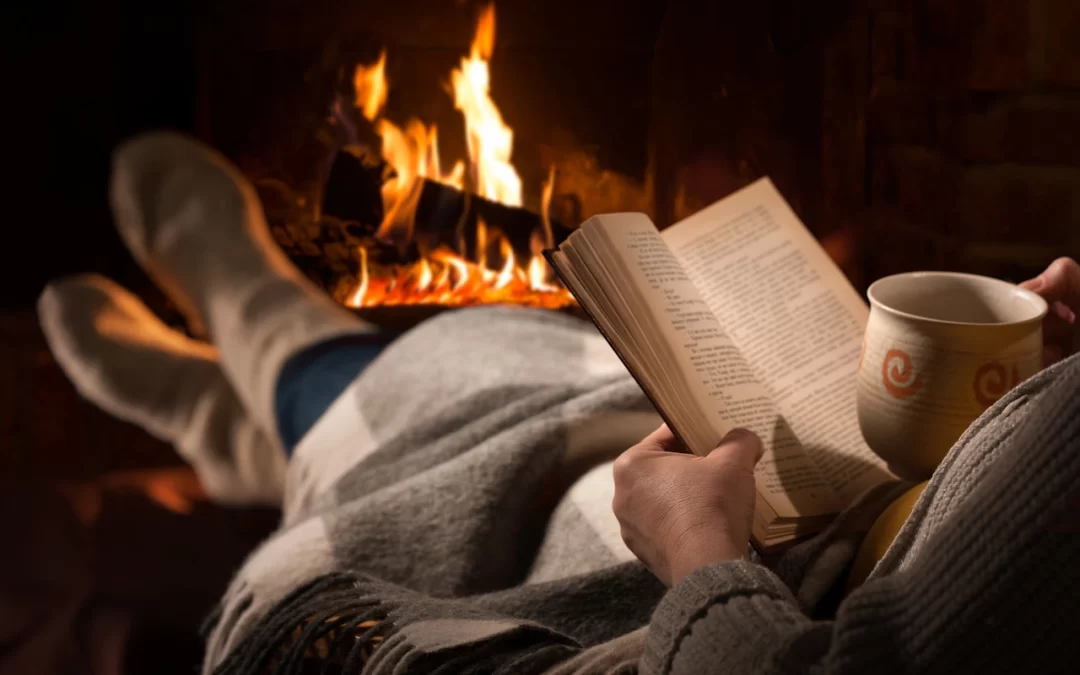A fireplace offers undeniable charm and warmth to your home. However, when things go wrong, your cozy fireplace becomes a frustrating or dangerous source of problems. From smoky living spaces to chimney damage, there are common fireplace issues to be aware of. Here are a few of the most prevalent problems and how to resolve them. We’ll also note which concerns require professional help.
Troubleshooting Issues with Your Fireplace
1. Smoke in the Home
Smoke in your living space occurs when smoke that should be going up the chimney enters the room. You might experience this issue for multiple reasons, including a clogged flue, a tight-fitting damper, or the lack of a chimney cap. If your fireplace produces excessive smoke, check for debris in the chimney. If the problem persists, verify the damper is open and allowing air to flow. If you still have issues with smoke in the house, call a professional to troubleshoot.
2. Soot Accumulation
Soot and creosote buildup may become a problem when you use your fireplace frequently. To prevent the accumulation of these substances in the chimney, only burn well-seasoned hardwood and keep the damper open before starting the fire. At least annually, hire a chimney sweep to remove creosote and other debris from the chimney.
3. Fireplace Issues: Cracked Firebricks
Firebricks of the interior lining of the fireplace may crack due to extreme heat or overuse. When this happens, mending the cracks is essential as they can lead to high heat transfer to other materials in your home. To repair the problem, clean the crack or gap and fill it with refractory cement or mortar designed for fireplaces.
4. Damaged Chimney
The chimney allows smoke and gases to exit your home. If the bricks are damaged, this could lead to hazardous fumes leaking into your living spaces. Call a professional to repair or replace the chimney if you notice cracked, missing, or chipped bricks or mortar.
5. Wood Burning Issues
If your wood isn’t catching fire, it may be due to improper storage. Only use properly cured firewood. Keep it in a dry area. If your firewood is stored correctly, the cause of the issue may be insufficient oxygen flow. Verify the damper is open and open a window to ensure enough air for your fire to burn.
6. Air Leaks and Drafts are Common Fireplace Issues
Cold drafts in the room where your fireplace is located may be due to various problems, including a poorly sealed damper or a breach in the chimney. Always check that the damper is tightly closed when the fireplace is not in use. Additionally, inspect the chimney and repair cracks or breaches that allow cold air to enter.
Recognizing and repairing common fireplace issues is essential for any homeowner with a fireplace. Call a professional to ensure your safety when dealing with significant problems such as a damaged chimney. Following these tips and practicing fireplace maintenance will keep your fireplace functional and safe for years.
FAQs
1. How do I ensure the safety of my fireplace usage at home?
Ensure annual professional inspections, use spark guards or glass doors, and keep flammable items away to guarantee a safe fireplace environment.
2. Are there any essential tools for safe fireplace operation?
Essential tools include a poker, shovel, and brush for maintenance, along with a sturdy screen or gate for added protection.
3. How should I start and maintain a fire efficiently?
Ignite the fire with newspaper or fire starters, starting with small logs and gradually increasing their size as the fire develops.
4. How can I prevent chimney fires?
Schedule regular chimney sweeps to remove creosote buildup and install a chimney cap to keep out debris and animals.
5. Is it necessary to have carbon monoxide detectors near the fireplace?
Yes, install carbon monoxide detectors in the fireplace room and bedrooms, testing them regularly and ensuring fresh batteries for optimal functionality.
Five Stars Home Inspection offers professional home inspections for customers in the Greater Boston area. Contact us to request an appointment for our services.

